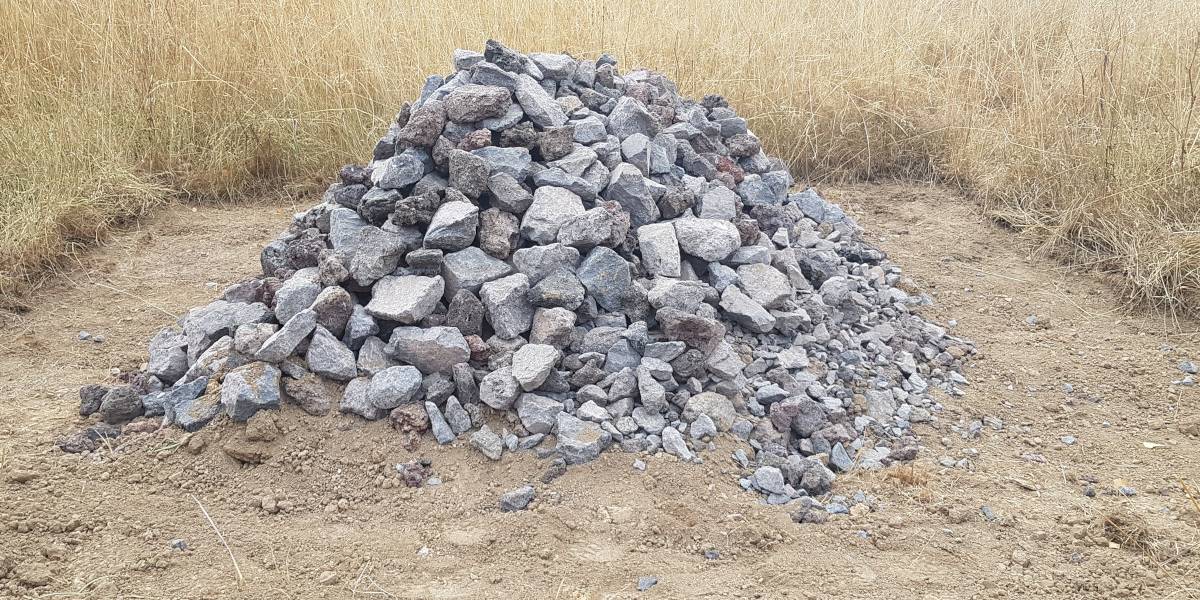Occurrence of stone piles and walls and their danger
Natural stone piles and walls in the wild were created either by the melting of glaciers or as a weathering product of the existing rock, i.e. rock that is located on or near the earth's surface. Such naturally formed stone piles can still be admired in protected areas today.
By using the landscape as fields and meadows, additional artificial cairns and walls were created, which are also known as cairns. The stones were collected from the usable areas because they made it difficult to cultivate the areas. Collected stones were placed along paths, forest edges or to demarcate one's own areas at the edges of the usable areas. As a result, cairns and ramparts of various sizes have been created.
In the high-tech modern era, fields and meadows are cultivated with large machines. Accumulations of stones that limit the passage of the areas are correspondingly disruptive. In many places, the once common structures have gradually disappeared. Nowadays, the creation of new stone piles and walls is often done as part of nature conservation measures.
Ecological significance of cairns
Sun-exposed stone piles provide a habitat, especially for heat-loving animals. The numerous small caves and passages offer optimal hiding places, retreats and breeding grounds for animals. In winter, sufficiently large piles of stones provide a frost-free and dry hiding place, ensuring optimal conditions for overwintering.
When you think of rock piles as a habitat, you usually first think of reptiles, especially lizards. These structures provide a habitat for far more animals. In addition to spiders and snails, a variety of insects can be found here. Wasp species, beetles and ants like to use stone piles just as much as wild bees. In addition to bumblebee habitats, there are wild bee species that use abandoned snail shells as breeding grounds.
A gravel garden does not replace a pile of stones or a stone garden
Stacks of stones or rock gardens can also provide suitable habitats in residential areas. However, modern gravel gardens do not have the potential to replace or complement the corresponding structures.
Gravel gardens are created with the illusion of being easy to care for. To prevent herbs from growing, they are usually covered with a dense weed fleece. The gravel above has no direct contact with the ground. This means that no cavities can be created or, for example, dug. The gravel layer is only a few centimeters. There are no real cavities here. Accordingly, even the smallest animals will not settle here.
To make matters worse, gravel gardens really heat up the local climate. Stones heat up more than meadows, for example. The heat is also stored for longer and is released overnight, so that the nighttime cooling effect is massively reduced. Naturally designed stone piles, on the other hand, are usually found in a natural or near-natural environment. This reduces these heat island effects and the stored heat benefits the animals, but does not significantly heat up the environment.
Measures
First, a foundation is made with rubble stone, e.g. B. Gabion gravel (size depending on your preference and space availability).
The rubble stones are piled up into a heap, making sure that the larger stones are piled at the bottom.
After the “basic pile” has been created, stones can be added at any time of any size can be collected, e.g. B. occur when gardening, for example when planting native perennials or when dismantling gravel areas. The stones are then simply placed in the base pile and the pile grows.
Individual old branches or dry blackberry vines can expand the habitat, especially for wild bees and wasps. However, it is important that the pile is never completely covered.
Observation opportunities
Further reading and links
- Construction instructions from the Rheinische Kulturlandschaft Foundation< /li>
-
Comparative temperature measurement of sealed and greened areas of the “Mouvement écologique”

